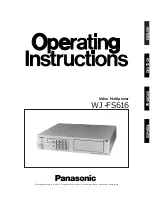
NI 4065 Calibration Procedure
2
ni.com
Conventions
The following conventions are used in this document:
»
The
»
symbol leads you through nested menu items and dialog box options
to a final action. The sequence
Options»Settings»General
directs you to
pull down the
Options
menu, select the
Settings
item, and select
General
from the last dialog box.
This icon denotes a note, which alerts you to important information.
This icon denotes a caution, which advises you of precautions to take to
avoid injury, data loss, or a system crash. When this symbol is marked on a
product, refer to the
Read Me First: Safety and Electromagnetic
Compatibility
document included with the device for information about
precautions to take.
bold
Bold text denotes items you must select or click in the software, such as
menu items and dialog box options. Bold text also denotes parameter
names.
italic
Italic text denotes variables, emphasis, a cross-reference, hardware labels,
or an introduction to a key concept. Italic text also denotes text that is a
placeholder for a word or value you must supply.
monospace
Text in this font denotes text or characters you should enter from the
keyboard, sections of code, programming examples, and syntax examples.
This font is also used for the proper names of disk drives, paths, directories,
programs, subprograms, subroutines, device names, functions, operations,
variables, filenames, and extensions.
Software Requirements
NI-DMM supports a number of programming languages including
LabVIEW, LabWindows
™
/CVI
™
, Microsoft Visual C++, and Microsoft
Visual Basic. When you install NI-DMM, you need to install support for
only the language you intend to use to write your calibration utility. The
procedures in this document are described using LabVIEW VIs and
C function calls.
Note
NI-DMM version 2.7.1 or later supports NI PXI/PCI/PCIe-4065 calibration.
NI-DMM version 2.8 or later supports NI USB-4065 calibration. You can download the
latest version of NI-DMM from
ni.com/drivers
.



































